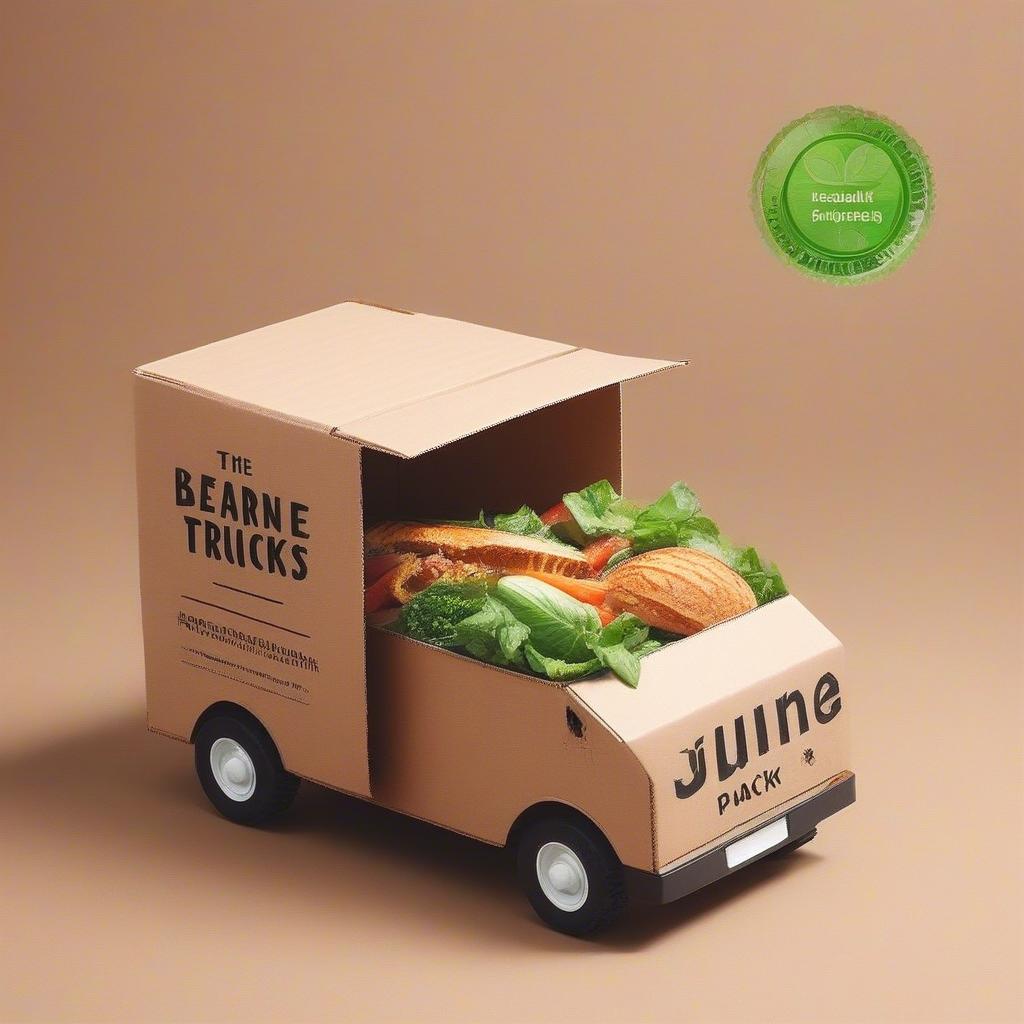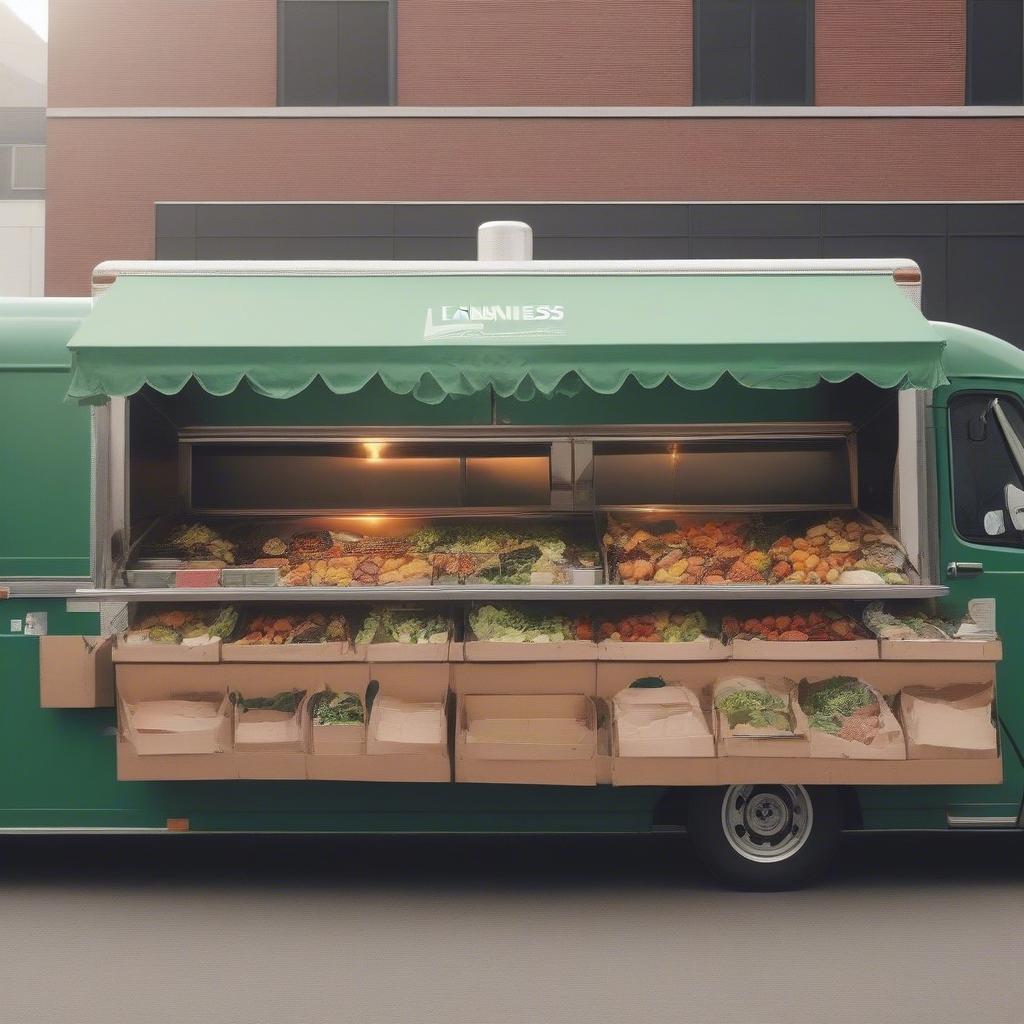
The Role of Customer Feedback in Daily Food Truck Success
Running a successful food truck isn’t just about having amazing recipes; it’s about understanding and adapting to your customers’ needs and desires. This is where the power of customer feedback comes in. It’s the lifeblood of your business, a direct line to the people who keep your wheels turning and your grill hot. Without it, you’re essentially driving blind. This article explores how listening to customer feedback is paramount for achieving daily success and fostering sustainable growth for your food truck.
Why is Customer Feedback Crucial for Your Food Truck?
At its core, customer feedback is a collection of opinions, suggestions, and reactions from the people who eat at your food truck. It’s not just about whether they liked the food or not; it’s a comprehensive insight into their entire experience. Here’s why this information is so vital:
Understanding Your Customers Better
- Taste Preferences: What flavors are they craving? What are their favorite dishes? Are there any menu items that consistently receive lukewarm responses? Customer feedback helps you fine-tune your offerings to meet their palate preferences.
- Service Expectations: How do they perceive your service? Is it fast and efficient, or are there bottlenecks? Are your staff members friendly and helpful? Customer feedback can highlight areas where you excel and areas that require improvement.
- Overall Experience: Beyond the food and service, what is their general impression of your food truck? Is the ambiance appealing? Is the ordering process smooth? Do they feel valued? This broader customer feedback reveals the total picture.
Identifying Areas for Improvement
- Menu Refinement: Perhaps a dish isn’t selling well because of a specific ingredient or seasoning. Customer feedback can pinpoint these issues allowing you to adjust your recipes to maximize success.
- Operational Efficiency: Are long queues deterring customers? Are there delays in order preparation? This feedback reveals operational hurdles and ways to streamline processes.
- Customer Service Training: If customers report negative interactions with staff, it’s a clear signal for targeted training and development in improving customer interactions
- Marketing Effectiveness: What is attracting people to your food truck? Which channels are working and which are not? Direct feedback can help refine your marketing strategy.
Driving Daily Success and Growth
- Increased Customer Loyalty: When customers feel heard and valued, they are more likely to become repeat patrons and brand advocates.
- Improved Reputation: Positive word-of-mouth, fueled by excellent food and customer service, builds a strong reputation for your food truck.
- Higher Sales and Profitability: By addressing pain points, improving customer experience, and refining your menu based on customer feedback, you can boost sales and overall profitability.
- Competitive Advantage: In the crowded food truck market, those who listen to their customers and adapt quickly gain a competitive edge.
Types of Customer Feedback You Should Be Gathering
There are various avenues through which you can gather customer feedback. The key is to utilize a variety of methods to collect a diverse range of insights. Here are some of the most effective strategies:
Direct Feedback Channels
- In-Person Conversations: This is the most immediate form of feedback. While customers are waiting or after they’ve finished their meal, ask open-ended questions like: "How was your meal today?" or "Is there anything we could improve?" Be genuinely interested in their answers.
- Comment Cards or Forms: Provide physical cards that customers can fill out and drop in a designated box. Keep the questions concise and easy to answer.
- Email or Text Surveys: After a purchase, send a short survey to customers using email or text message. This method is more formal and allows you to ask more specific questions.
- QR Codes: Display QR codes on your food truck or receipts that link directly to a feedback form or survey. This makes it convenient for customers to provide feedback on their smartphones.
Digital Feedback Platforms
- Social Media: Monitor your social media channels for mentions, comments, and direct messages. Engage with your followers and actively respond to feedback, both positive and negative.
- Online Review Sites: Regularly check review sites like Yelp, Google Reviews, and TripAdvisor for customer feedback. Respond to reviews promptly and professionally, addressing concerns where necessary.
- Dedicated Feedback Platforms: Consider utilizing dedicated customer feedback platforms that streamline the process of gathering, analyzing, and responding to feedback.
Indirect Feedback Observations
- Sales Data Analysis: Which menu items are selling the most? Which are lagging behind? Analyzing sales data can point towards customer preferences and areas needing improvement.
- Customer Behavior Observation: Pay attention to customer interactions and flow around your truck. Are they hesitating over the menu? Are they confused about the ordering process? These observations can provide clues to areas you need to work on.
- Competitor Analysis: Look at what other food trucks are doing. What are their customers saying? This can give you insights into the market and potential opportunities for differentiation.
Implementing a System for Gathering and Using Feedback
Gathering customer feedback is only half the battle. You need a robust system for effectively utilizing this valuable data. Here’s how to make the most of the feedback you collect:
Step 1: Collect Feedback Consistently
- Establish Regular Feedback Channels: Don’t just collect feedback occasionally; make it a regular part of your business operations.
- Train Your Staff: Equip your team with the skills to gather feedback effectively. This includes asking the right questions, actively listening, and being receptive to different opinions.
- Promote Feedback Opportunities: Make it easy for customers to provide feedback by clearly communicating the various channels available. Use clear signage, and encourage customers to share their thoughts.
Step 2: Analyze Feedback Thoroughly
- Categorize Feedback: Organize feedback into categories like menu, service, ambiance, and price. This will make it easier to identify trends and patterns.
- Identify Recurring Themes: Look for common issues that repeatedly appear in customer comments. These are usually the areas that need immediate attention.
- Use Data Analysis Tools: Leverage tools like spreadsheets or online platforms to organize and analyze large amounts of feedback data. This can uncover insights that may be difficult to spot manually.
Step 3: Take Actionable Steps Based on Feedback
- Prioritize Improvements: Focus on the most critical issues first, those that have the most significant impact on customer satisfaction and your business’s performance.
- Develop Action Plans: For each improvement area, create a specific action plan with clear objectives, timelines, and responsibilities.
- Implement Changes and Monitor Results: Once you’ve made changes, continue to gather feedback to assess their effectiveness and ensure the improvements are having the desired impact.
- Communicate Actions to Customers: Let customers know that you’ve listened to their feedback and made adjustments. This shows that you value their input and encourages ongoing engagement.
Examples of Feedback and Action
Example 1: Feedback on Menu Variety
- Customer Feedback: "I love the tacos, but it would be great to have a vegetarian option."
- Action: Develop a delicious vegetarian taco option, incorporating customer-suggested ingredients if possible.
- Result: Increased customer satisfaction and reach to a new customer segment.
Example 2: Feedback on Service Speed
- Customer Feedback: "The line moves so slowly, I almost left without ordering."
- Action: Analyze the bottlenecks in your ordering process and streamline operations. Consider having a dedicated cashier, or simplifying the menu to reduce decision-making time.
- Result: Faster service, happier customers, and increased throughput.
Example 3: Feedback on Ambiance
- Customer Feedback: "The seating area was dirty and uncomfortable."
- Action: Improve the cleanliness of the seating area, consider adding cushions, umbrellas, or even more seating options.
- Result: A more comfortable and appealing eating environment.
Templates for Feedback Collection
Here are some sample questions and templates that you can adapt for your food truck:
Simple Feedback Card:
- "How was your overall experience today?" (Excellent / Good / Okay / Poor)
- "What was your favorite dish?"
- "Is there anything we could do to improve?"
- "Any other comments or suggestions?"
Online Survey (Google Forms, SurveyMonkey):
- "How likely are you to recommend us to a friend?" (Scale of 1-10)
- "What did you enjoy most about your experience?" (Open-ended text box)
- "How was the quality of the food?" (Excellent / Good / Okay / Poor)
- "How would you rate our service?" (Excellent / Good / Okay / Poor)
- "What can we do to improve?" (Open-ended text box)
- "Would you like to receive updates about new menu items and special offers?" (Yes / No)
In-Person Conversation Starters:
- "Hi, how was your meal today?"
- "Did you try anything new today? What did you think?"
- "We’re always looking for ways to improve. Do you have any suggestions?"
- "We appreciate your business. Do you have any questions for us?"
Learn Business: Your Partner in Food Truck Growth
Navigating the complexities of running a successful food truck can be challenging. This is where Learn Business steps in. We understand the unique needs of small businesses like yours and offer customized guidance, resources, and templates designed to streamline your operations and drive growth.
How Learn Business Supports Your Food Truck
- Business Plan Templates: Gain access to professionally crafted business plan templates specific to the food truck industry. These templates help you structure your business goals, financial projections, and market analysis.
- Financial Management Tools: Access templates for tracking your expenses, revenue, and profit margins. We provide tools that simplify financial management and help you make informed decisions.
- Marketing Strategy Guides: Learn effective marketing strategies specifically tailored to food trucks. Get templates for creating social media campaigns, email marketing, and local partnerships.
- Customer Feedback Management Resources: Learn how to effectively gather, analyze, and act upon customer feedback using templates and best practices.
- Operational Efficiency Templates: Improve your operational processes with templates for inventory management, staffing schedules, and food preparation.
- Expert Guidance: Connect with experienced business mentors who can provide personalized advice and support to help your food truck thrive.
Learn Business is your ally in transforming data-driven insights into real-world strategies that fuel your food truck’s daily success. With our guidance and resources, you can turn customer feedback into a powerful growth engine.
The Long-Term Benefits of Prioritizing Customer Feedback
Prioritizing customer feedback isn’t just about solving problems; it’s about building a thriving, sustainable business. Here’s what you can expect in the long run:
- Stronger Customer Relationships: When you actively listen to your customers, they feel valued and appreciated, leading to stronger, more loyal relationships.
- Continuous Improvement: The commitment to listening to feedback ensures that your food truck is continuously evolving and improving, adapting to changing customer preferences and market conditions.
- Enhanced Brand Image: A reputation for excellence in both food and customer service, built upon the foundation of customer feedback, creates a strong and appealing brand image.
- Sustainable Growth: By focusing on customer satisfaction and continuously improving, you build a business that is resilient and poised for long-term growth.
Conclusion: The Power of Listening
In the competitive food truck industry, those who listen to their customers are the ones who thrive. Customer feedback is not just a data point; it’s a window into the hearts and minds of the people who make your business possible. By establishing a robust system for gathering, analyzing, and acting on this feedback, you can create a food truck that not only serves delicious food but also provides an exceptional and memorable customer experience. Remember, customer feedback is your secret ingredient to achieving daily success and building a long-lasting, thriving business.



Leave a Reply